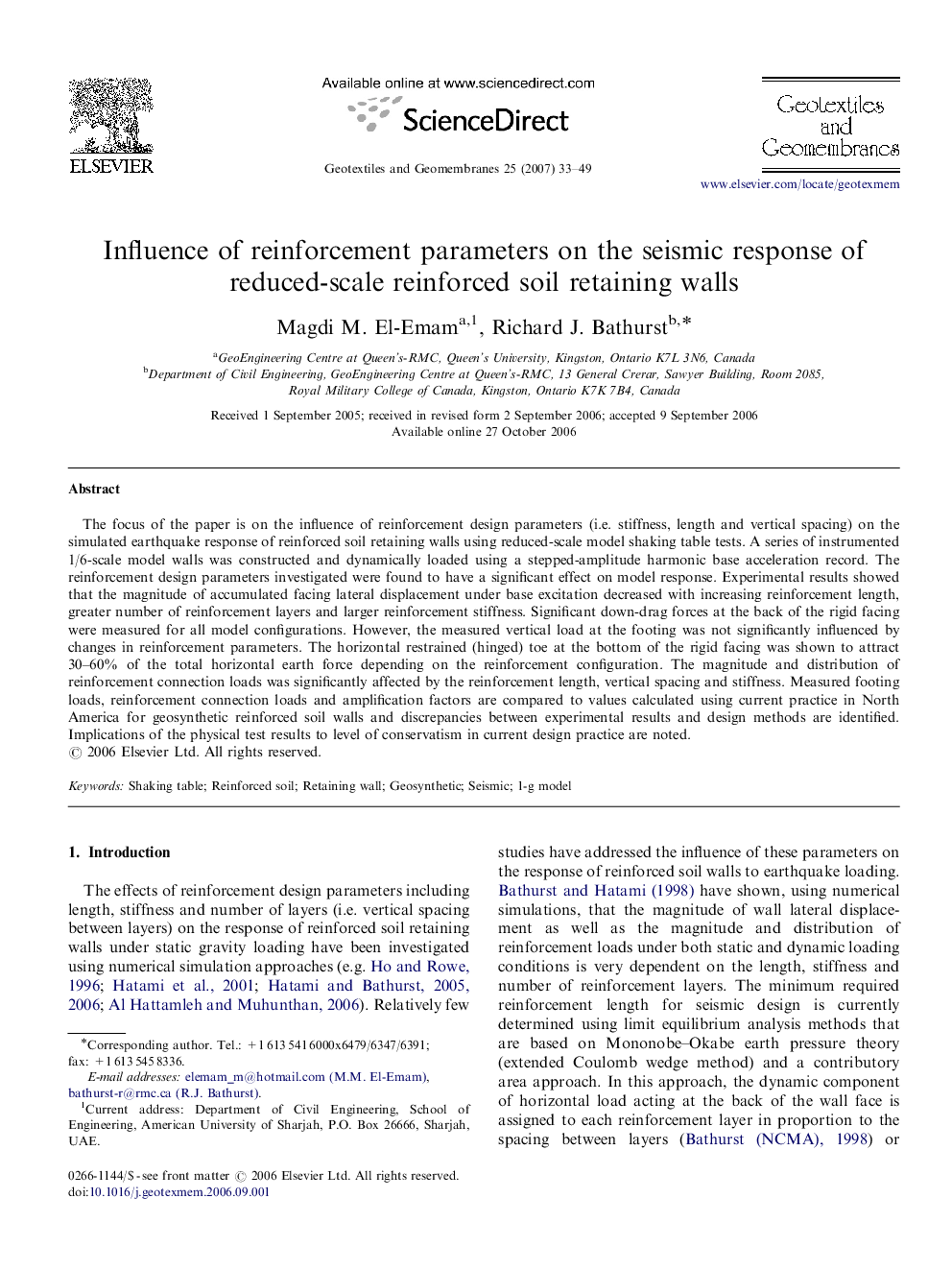| Article ID | Journal | Published Year | Pages | File Type |
|---|---|---|---|---|
| 274536 | Geotextiles and Geomembranes | 2007 | 17 Pages |
The focus of the paper is on the influence of reinforcement design parameters (i.e. stiffness, length and vertical spacing) on the simulated earthquake response of reinforced soil retaining walls using reduced-scale model shaking table tests. A series of instrumented 1/6-scale model walls was constructed and dynamically loaded using a stepped-amplitude harmonic base acceleration record. The reinforcement design parameters investigated were found to have a significant effect on model response. Experimental results showed that the magnitude of accumulated facing lateral displacement under base excitation decreased with increasing reinforcement length, greater number of reinforcement layers and larger reinforcement stiffness. Significant down-drag forces at the back of the rigid facing were measured for all model configurations. However, the measured vertical load at the footing was not significantly influenced by changes in reinforcement parameters. The horizontal restrained (hinged) toe at the bottom of the rigid facing was shown to attract 30–60% of the total horizontal earth force depending on the reinforcement configuration. The magnitude and distribution of reinforcement connection loads was significantly affected by the reinforcement length, vertical spacing and stiffness. Measured footing loads, reinforcement connection loads and amplification factors are compared to values calculated using current practice in North America for geosynthetic reinforced soil walls and discrepancies between experimental results and design methods are identified. Implications of the physical test results to level of conservatism in current design practice are noted.
